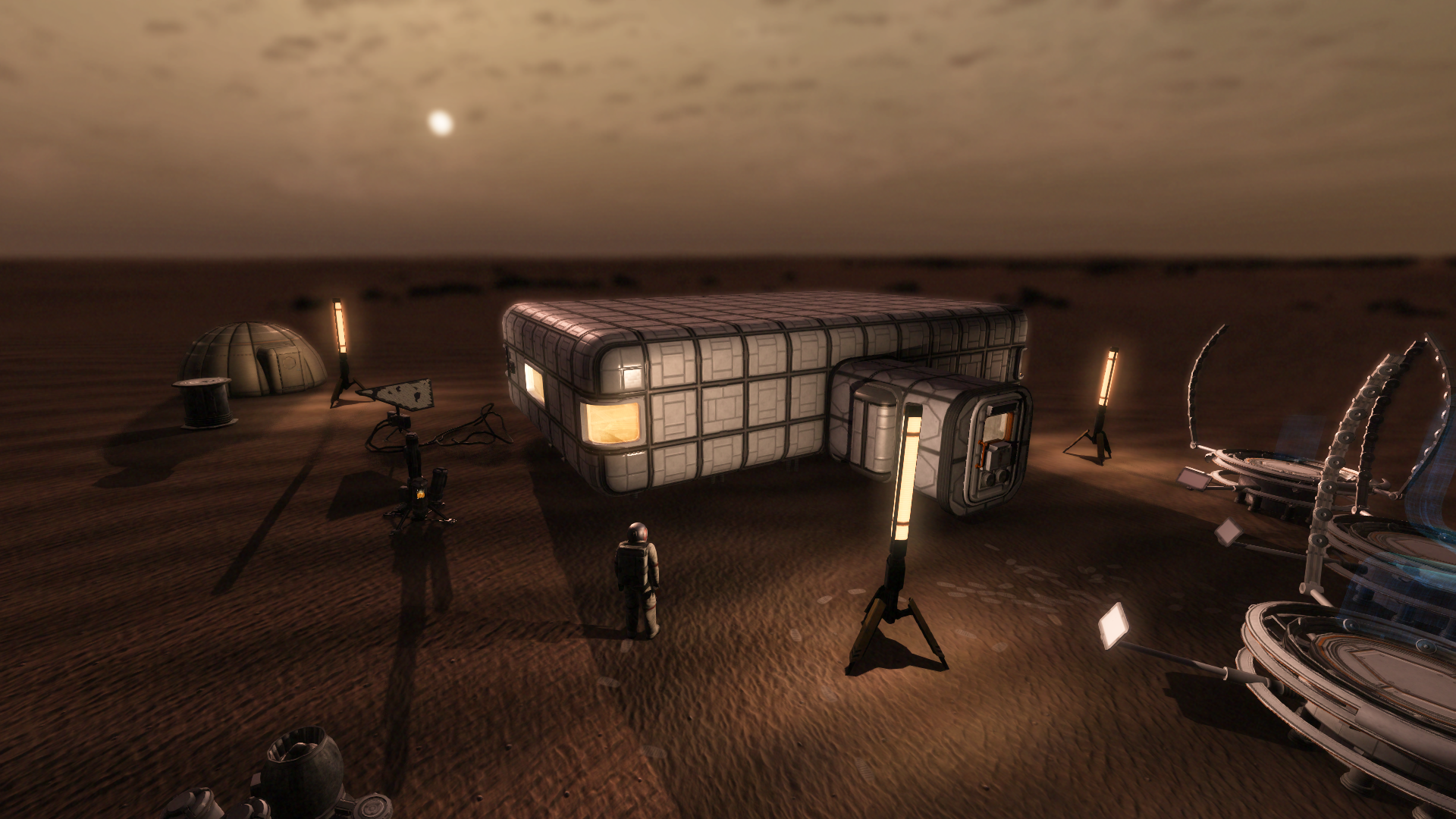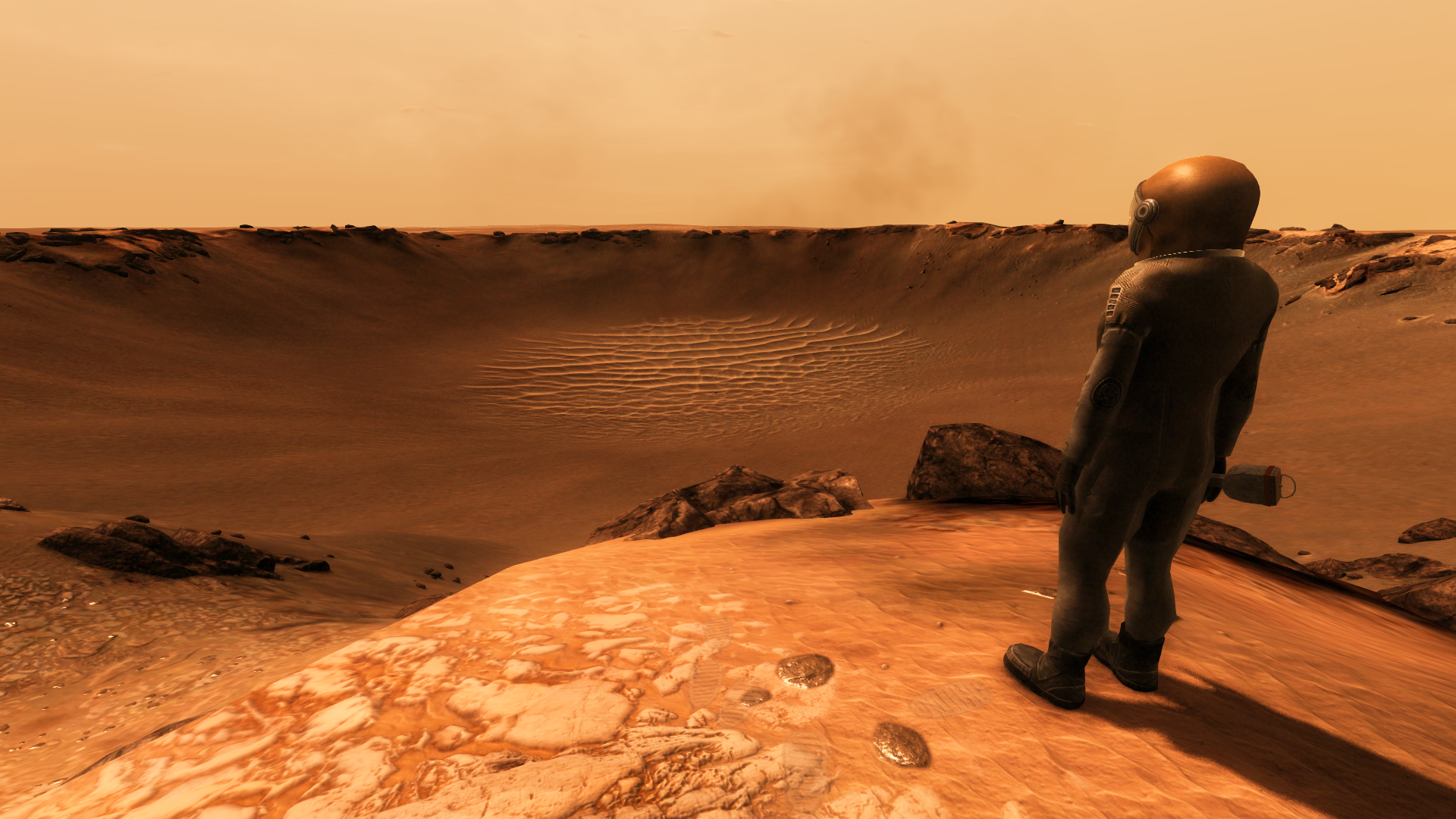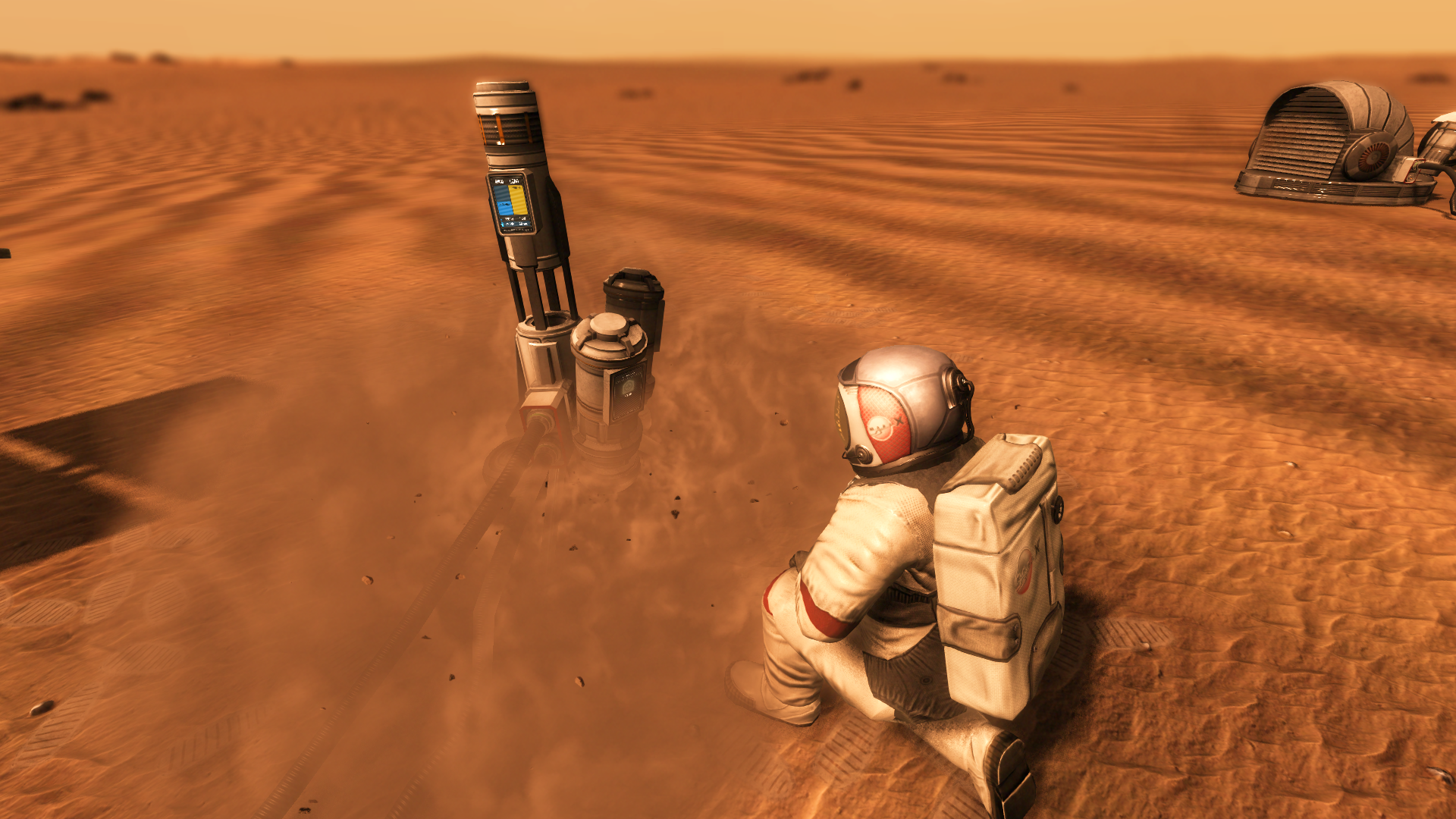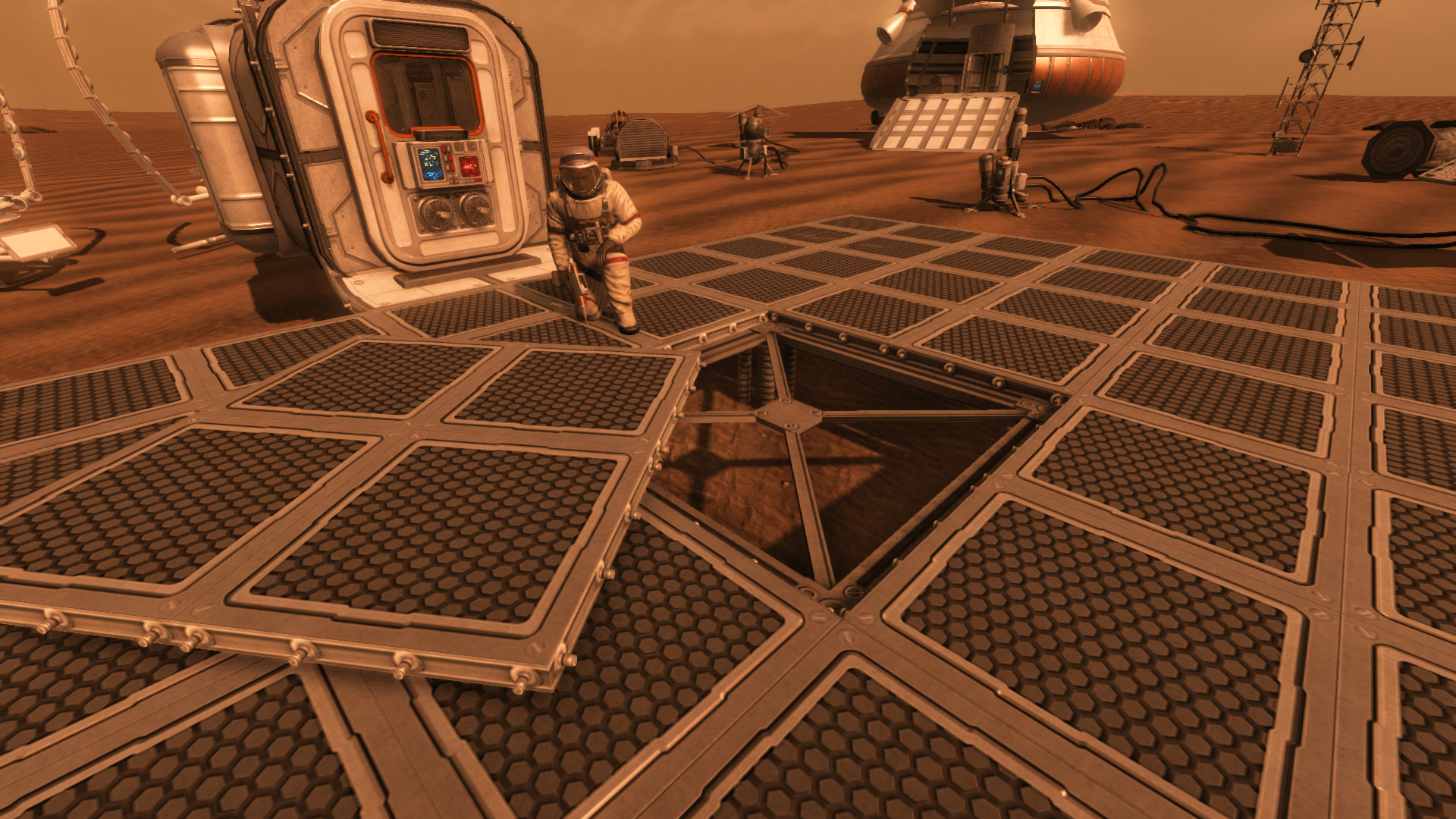Building a new home on the Red Planet in Take On Mars

When I last played Take On Mars it was a game about exploring the planet with probes and rovers. It was slow, dull, yet strangely relaxing. I ended up playing it for ten hours, trundling around, taking soil samples, listening to the lonely howl of the wind. But since my last Martian adventure, the developers have introduced manned missions and survival elements to the game. Now you can build a colony, grow food, mine resources, and live a second life on the fourth rock from the Sun.
Depending on the scenario—whether it’s one that’s included in the game or one you’ve downloaded from the Steam Workshop—you’ll probably find a giant 3D printer in a crate near your landing site. Fire it up and you’ll be able to print out the building blocks of what will become your new home away from home. There are corners, walls, windows, floors, doors, beds, and pretty much everything you need to set up a simple habitat. Plug these bits together and you’ll soon have somewhere to live on Mars.
It takes ages, though. The first-person building is incredibly twitchy and laborious, and it took me three hours to build a basic lab/living quarters combo with an airlock. But, like the rover exploration parts of the game, it was a curiously tranquil experience. I listened to podcasts and music as I slotted my off-world villa together. And as I finished, the sun was setting, casting a red glow over my creation. It was a satisfying moment, and I felt like a pioneer sticking my flag into the dirt of an alien world.

A recent update added power to the game, and the area around my base is littered with solar panels and cables. You also have to think about your astronaut’s health, hydration, hunger, and tiredness. Resources can be mined from the surface of the planet using 3D-printed machines—letting you, for example, combine chemicals and produce fuel to keep your scouting buggy running. You can grow potatoes to keep yourself fed too, which anyone who’s seen/read The Martian will appreciate.
Take On Mars is a remarkably flexible game. Thanks to a powerful editor, there are loads of player-made scenarios that involve all different kinds of play styles. Some are about survival, some are about exploration, some are about performing scientific tests, and some are playgrounds designed to let you experiment with the game’s vehicles and systems. If you’d prefer a more traditional single-player mode, Space Program sees you building rovers, managing a budget, and completing missions.
It’s in Early Access and far from finished, but there’s already an impressive amount of stuff to do in the game—and more content is constantly being added, both by the developers and the modding community. There are scenarios that are limited by the technology we have today, and others that are more far-fetched, including the ability to explore a terraformed Martian surface with trees and oceans.

Created using real NASA data, the game’s variety of Martian landscapes are incredibly atmospheric. From deep, cavernous craters to rolling hills of rock and red dust, the feeling of standing on another world is palpable. It looks especially nice at sunset, and the evenings feel suitably cold and desolate. Mars might be mostly empty, but it’s become one of my favourite virtual places to explore. And if you’ve had your fill of Mars, there are other locations to, er, take on including the Moon and our own planet Earth, which provide an interesting change of scenery—and gravity.
The biggest gaming news, reviews and hardware deals
Keep up to date with the most important stories and the best deals, as picked by the PC Gamer team.
As I potter around building my base, I have to be wary of solar events. Mars is regularly pummeled by solar storms, and getting caught out in one could give me a fatal dose of radiation. I learned this the hard way when I decided to take a buggy out to the nearby Victoria crater. As I stood on the lip, admiring the view, a warning flashed up on my HUD saying a solar event was minutes away. It was a tense drive back on the impossibly slow buggy, and I made it back to the radiation-shielded safety of my lander with seconds to spare.
Like a lot of sandbox games, you have to set your own objectives to really get the most out of Take On Mars. There are some scenarios with objectives, but a proper mission system is still in development. I find it’s more fun to create my own. I’m currently challenging myself to create a totally self-sufficient base, where my astronaut can live indefinitely. You can read about that in the next issue of PC Gamer. Or maybe you just want to build, which is fun in and of itself. The community has created some really amazing stuff using the alpha’s selection of parts.

My base is a glorified cube, but it’s my glorified cube. I love how my lander—which I arrived in, and which contained my starting materials—was dropped in the middle of an empty desert, but now the area is growing, slowly, into a colony. And like any good explorer, I’ve made an absolute mess. There are mistakenly-printed bits of junk lying all over the place. I may build a buggy with a truck bed and go and gather it all up at some point. I could dump it in the Victoria crater. No one will notice.
I’m basically recommending Take On Mars here, but I feel it’s my duty to accompany this recommendation with a MASSIVE WARNING. Not just a regular warning, but a MASSIVE one. Because as fun as it is—and I’ve gotten 20 enjoyable hours out of it so far—there’s no denying that it feels really janky. The character movement is frustratingly sluggish and clumsy, and the physics are always freaking out. I was placing a bit of wall on my base and was suddenly flung miles into the air, falling to my death. It’s a messy, unfinished, buggy game that is still very much in development.
But if you don’t mind bugs and deadly physics mishaps, Take On Mars is a very cool, very unique simulator. And if, like me, you’re interested in astronomy and space exploration, you’ll probably love it, despite its faults. I’m personally pretty exhausted by half-finished Early Access games these days, but I’ve let Take On Mars into the special club, just ‘cause I love what it’s doing—and I can’t wait to see how it evolves over the coming months. If you loved The Martian and want to experience what it’s like being Mark Watney for yourself, this is the closest you’ll get.
If it’s set in space, Andy will probably write about it. He loves sci-fi, adventure games, taking screenshots, Twin Peaks, weird sims, Alien: Isolation, and anything with a good story.


